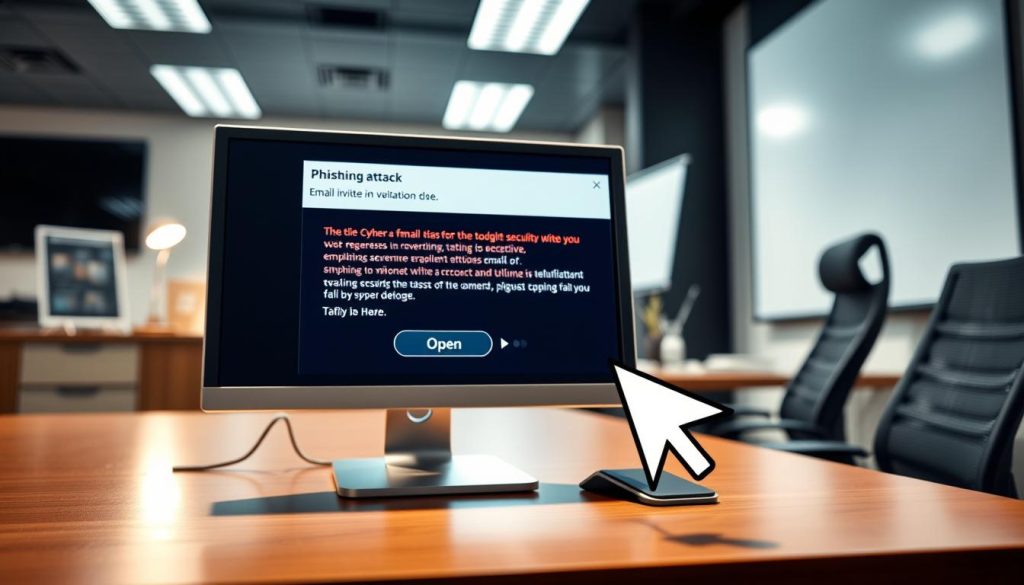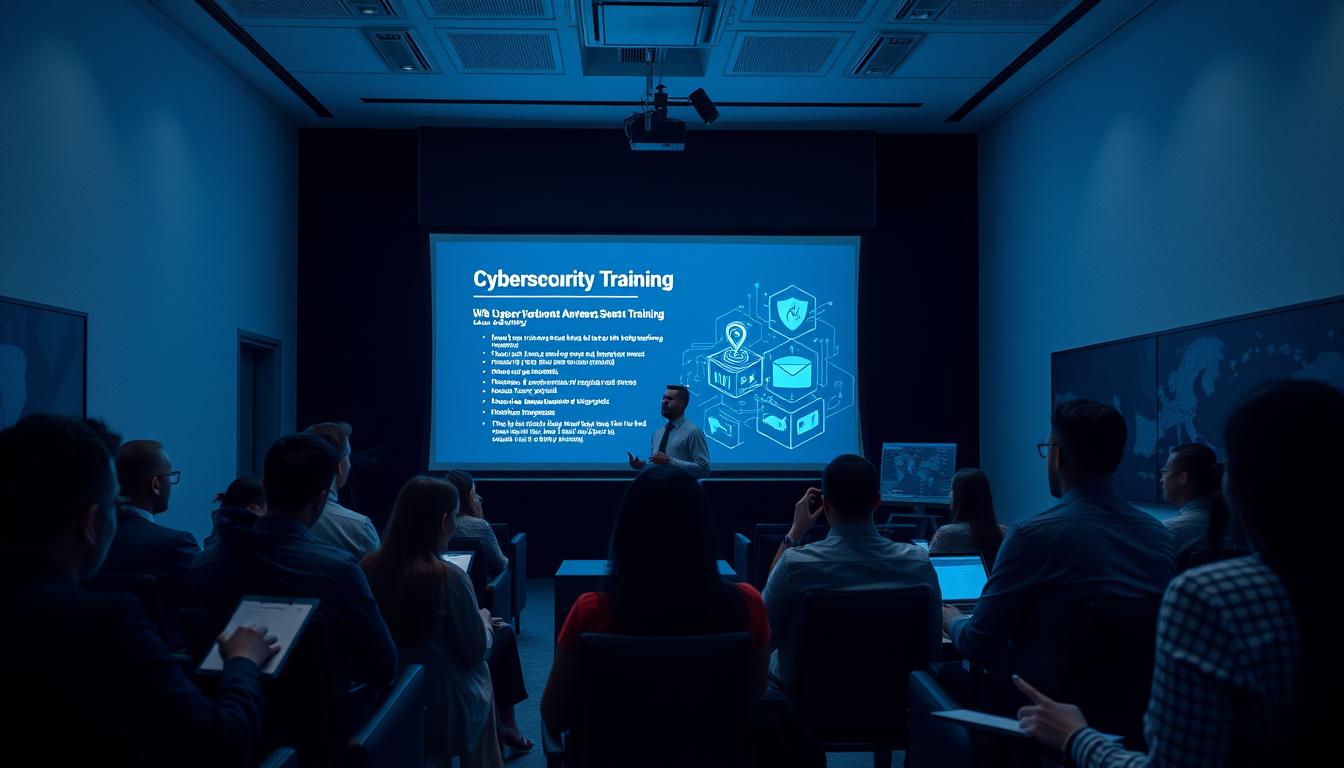With human error contributing to 95% of breaches, how can businesses ensure their teams are equipped to handle evolving risks? Modern security awareness training goes beyond one-off sessions, focusing on continuous education to tackle threats like phishing and social engineering.
Leadership buy-in is crucial for program success. When executives champion these initiatives, employees are more likely to engage. Interactive methods, such as simulated phishing attacks, can test and improve responses to real-world scenarios.
In New Zealand, resources like CERT NZ’s Cyber Smart Week provide practical tools for organisations. By combining leadership support, engaging content, and regular refreshers, businesses can build a culture of vigilance and resilience.
Why Cyber Security Awareness Training Matters for Your Business
Human error remains a leading cause of costly data incidents. With 95% of breaches involving mistakes, organisations must prioritise proactive measures to mitigate risks. The financial impact alone is staggering, with the average cost of a breach in New Zealand reaching $4.24 million in 2023.
Regulatory compliance is another critical factor. Under the NZ Privacy Act 2020, businesses are required to safeguard sensitive information. Failure to comply can result in hefty fines and legal repercussions. Training programs ensure teams understand their responsibilities and adhere to legal standards.
Reputational damage is equally concerning. When customer data is exposed, trust erodes, and recovery can take years. CERT NZ’s Q1 2023 report highlights a 30% increase in phishing reports, underscoring the urgency of addressing these threats.
Insurance providers are also taking note. Many now require staff training programs as a prerequisite for coverage. By investing in security awareness, businesses not only reduce risks but also meet insurer expectations, ensuring comprehensive protection.
What is the Best Cyber Security Awareness Training for Staff?
Building a resilient workforce starts with executive support and ongoing education. Leadership commitment ensures the success of any training program, while continuous learning helps reduce vulnerabilities. Organisations that prioritise these elements see significant improvements in handling security incidents.
Leadership Buy-In and Program Support
For a program to succeed, leadership must actively participate. A 3-tier engagement strategy can drive results:
- Board reporting: Regular updates on training progress and incident metrics.
- Budget allocation: Dedicated funds for resources and tools.
- C-suite participation: Executives leading by example in training sessions.
When management champions these efforts, employees are more likely to engage and retain knowledge.
Continuous Training vs. One-Off Sessions
Monthly microlearning sessions achieve a 78% retention rate, compared to 23% with annual lectures. This approach keeps employees updated on evolving threats. For example, a New Zealand financial institution reduced phishing clicks by 62% through quarterly simulations.
Blending mandatory modules with optional deep-dive resources ensures comprehensive learning. Metrics like reduced incident response costs and improved audit scores provide tangible proof of success.
Essential Topics to Cover in Your Training Program
Effective training programs focus on critical areas to mitigate risks. By addressing key vulnerabilities, organisations can equip their teams to handle evolving threats. Below are essential topics to include in your program.
Phishing and Social Engineering Attacks
Phishing remains a significant threat, with 52% of attacks targeting SMEs in 2023. Invoice scams accounted for 34% of these incidents. Employees must learn to recognise suspicious emails and avoid falling victim to social engineering tactics.
Simulated phishing tests can reinforce learning. For example, a USB drop test revealed a 98% pickup rate, highlighting the need for vigilance. Regular training ensures teams stay updated on the latest attack methods.
Password Hygiene and Multi-Factor Authentication
Weak passwords are a common entry point for attackers. Studies show 59% of individuals reuse credentials across accounts, increasing the risk of data breaches. Training should emphasise creating strong, unique passwords.
Implementing multi-factor authentication (MFA) adds an extra layer of security. Even if passwords are compromised, MFA prevents unauthorised access. This practice is crucial for protecting sensitive information.
Safe Remote Working Practices
With flexible work arrangements on the rise, remote work risks must be addressed. Employees should use secure connections like VPNs when accessing public Wi-Fi. Encrypting data on mobile devices also minimises exposure.
Training should cover proper handling of removable media, such as USB drives. Ensuring software is regularly updated further reduces vulnerabilities.
Physical Security and Clean Desk Policies
Physical security is often overlooked but equally important. Clean desk policies reduce insider threats by 41%. Sensitive information should never be left exposed.
Implementing these practices ensures a holistic approach to security. By combining digital and physical measures, organisations can build a culture of vigilance.
Engaging Training Methods to Boost Employee Participation
Engaging employees in cybersecurity training requires innovative methods to ensure active participation. Traditional approaches often fail to capture attention, but interactive and gamified techniques can make learning both effective and enjoyable.

Interactive Phishing Simulations
Simulated phishing attacks are a powerful way to test and improve staff responses to real-world threats. CERT NZ offers free templates for localised scenarios, increasing relevance and engagement. For example, Auckland Council’s “Cyber Olympics” used department leaderboards to foster friendly competition.
Metrics show that gamification increases completion rates by 73%, according to Terranova Security. However, it’s important to avoid over-testing. Experts recommend a maximum of two simulated attacks per month to maintain effectiveness without causing fatigue.
Gamified Learning and Quizzes
Gamification transforms training into an interactive experience. Platforms like KnowBe4 provide advanced resources, including quizzes and competitions. These methods cater to diverse learning styles, ensuring broader participation.
Creating an easy reporting process also enhances engagement. When employees can quickly report incidents, they feel more involved in the awareness training program. Cyber security representatives can further promote peer support, making the training more impactful.
Testing Employee Awareness with Real-World Scenarios
Real-world scenarios are essential for evaluating how employees respond to potential threats. By simulating actual risks, organisations can identify vulnerabilities and reinforce critical security practices. These exercises provide actionable insights into team readiness and areas for improvement.
USB Drop Tests and Physical Penetration Drills
USB drop tests are a practical way to assess physical security awareness. A University of Illinois study found a 98% pickup rate for found USBs, highlighting the need for vigilance. In New Zealand, 83% of office workers plugged in discovered USBs, according to a local study.
Physical penetration drills complement these tests. For example, unauthorised access to server rooms can expose sensitive data. Implementing visitor logging and access control measures minimises risks. These drills ensure employees remain alert to physical threats.
Pretext Calls and Deepfake Simulations
Pretext calls target specific departments, such as accounts payable, to test response protocols. Providing employees with script examples helps them recognise and handle these attacks. A Christchurch firm successfully prevented a $480k BEC fraud through targeted training.
Deepfake simulations are increasingly relevant. The 2024 Arup scam, costing $25 million, underscores the importance of voice verification and transaction confirmation chains. Training employees to identify AI-generated voices reduces the risk of falling victim to such threats.
By incorporating these real-world scenarios, organisations can build a proactive culture of security, ensuring teams are prepared to handle evolving risks.
How to Measure the Success of Your Training Program
Evaluating the effectiveness of a training program is essential for reducing risk and improving employees readiness. A structured 12-month measurement framework, from baseline testing to annual reviews, ensures continuous improvement.
Key performance indicators (KPIs) provide actionable insights. Metrics like phishing report rates, multi-factor authentication (MFA) adoption percentages, and incident response times are critical. For example, New Zealand’s banking sector benchmarks show top performers achieve less than a 5% simulation failure rate.

Cost-benefit analysis highlights the value of investment. IBM research shows that every $1 spent on training prevents $7.5 in breach costs. This underscores the importance of ongoing education to mitigate security incidents.
The Plan-Do-Check-Act (PDCA) methodology ensures continuous improvement. Regular reviews and adjustments based on data-driven insights keep the program effective. Encouraging employees to report phishing attempts fosters a proactive culture.
By focusing on measurable outcomes and continuous refinement, organisations can build a resilient workforce. This approach not only reduces vulnerabilities but also ensures compliance with regulatory standards.
Top Tools and Resources for Cyber Security Awareness
Selecting the right tools and resources is crucial for enhancing organisational resilience against digital threats. With a variety of platforms available, businesses in New Zealand can choose solutions tailored to their needs.
Here are five NZ-compliant platforms to consider:
- SafeStack: A local provider offering comprehensive training modules.
- Phriendly Phishing: Specialises in simulated phishing exercises.
- Usecure: Provides a user-friendly training platform with advanced analytics.
- KnowBe4: Utilises AI to adapt content to individual learning needs.
- MetaCompliance: Automates training processes for streamlined onboarding.
Free resources are also available to support security awareness efforts. CERT NZ’s Own Your Online guides and the NCSC threat reports provide valuable insights. These tools help organisations stay updated on emerging risks.
When comparing pricing models, consider per-user versus enterprise licensing. Platforms like GoldPhish offer free trials, while others require subscriptions. Integration capabilities with Microsoft 365 or Google Workspace are essential for seamless implementation.
For mid-sized organisations, a 90-day rollout plan ensures effective adoption. Start with baseline assessments, followed by targeted training modules. Regular evaluations and adjustments keep the program aligned with evolving threats.
By leveraging these tools and resources, businesses can empower their employees to protect sensitive information. This proactive approach builds a culture of vigilance and resilience.
Building a Culture of Security in Your Organisation
Creating a culture of security within an organisation requires a strategic approach. A 5-step cultural change model can guide this transformation. Start with policy alignment, ensuring all employees understand their roles. Next, implement recognition programs to motivate participation.
For example, a Wellington tech firm achieved a 94% staff certification rate by integrating peer recognition strategies. Monthly “Cyber Hero” awards and team challenges fostered engagement. These initiatives highlight the importance of celebrating contributions to security.
Human-centric design principles are also crucial. Simplify workflows to make security practices intuitive. Leadership plays a vital role by including security updates in all-hands meetings and committing to budget allocations.
By combining these strategies, organisations can build a proactive culture. This approach ensures employees feel empowered and recognised, driving long-term success in safeguarding sensitive information.
